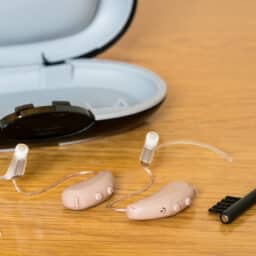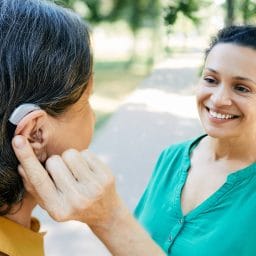Here’s How Often You Should Perform These Maintenance Tasks on Your Hearing Aids

Hearing aids are an invaluable tool for people with hearing loss. According to the National Institute on Deafness and Other Communication Disorders, roughly 28.8 million U.S. adults could benefit from using hearing aids. If you are new to hearing aids, it’s important to develop a proper maintenance routine to care for your device and keep…
Best Reasons To Wear Hearing Aids

There are so many wonderful reasons to treat your hearing loss with hearing aids that there’s no way we could list them all in one article! So, let’s take a look at five of the biggest ways hearing aids can benefit your life. Five Great Reasons To Use Hearing Aids Better relationships with your loved…
Here’s How You Can Play Sports With Hearing Aids

Getting regular physical activity is one of the most essential keys to staying healthy and improving your quality of life. It’s recommended that adults over the age of 18 get 150 minutes of moderate physical activity a week or 75 minutes of vigorous physical activity. You can do this in a variety of ways, whether…
Ways to Extend Your Hearing Aid’s Lifespan

The National Institute on Deafness and Other Communication Disorders reports that around 28.8 million U.S. adults could benefit from using hearing aids. If you’re among this group and you own a hearing aid, you probably want to know how you can extend its lifespan. We review how below. Clean Your Hearing Aids Every Day Daily…
How To Get Used to Your Hearing Aids

If you recently made the choice to get hearing aids to treat your hearing loss, congratulations! You’ve taken an essential step in prioritizing your hearing health. As you may have discovered, it can take a bit of time to get used to wearing hearing aids. To make things a little easier, consider the following tips….
How to Make the Most of Phone Calls When You Use Hearing Aids

Talking on the phone is one of the most notoriously difficult listening situations for people with hearing loss, in part due to the way many phones distort voices and also due to the fact visual cues are absent. However, there are many strategies for having successful telephone calls, especially if you wear hearing aids. Connect…
What Are the Differences Between Hearing Aids & Cochlear Implants?

Approximately 48 million Americans have hearing loss, and those who do have several options when it comes to treatment. Two types of hearing loss interventions that specifically address sensorineural hearing loss – or hearing loss caused by damage to sensory cells – are hearing aids and cochlear implants. There are some major differences between these…
Four Ways to Feel Confident When Wearing Hearing Aids

Hearing aids can offer many benefits to those with hearing loss. However, it can take a bit of time to fully experience all that they have to offer. If you are new to hearing aids, let’s examine four ways you can increase your confidence when wearing your device. Fight Hearing Aid Stigma The first barrier…
9 Active Listening Techniques for People with Hearing Loss

Have you ever gone on a long walk at Broad Run Park and felt exhausted afterward? Have you felt the same sort of feeling after a lengthy conversation? If so, you’re familiar with a phenomenon known as listening fatigue. To combat listening fatigue related to hearing loss and be a better conversation partner, we recommend…
Power Ups: The Basics of Hearing Aid Batteries

Hearing aids consist of four main parts: a microphone, which picks up sounds in your environment; a processor, which amplifies sounds to a level the wearer can easily hear; a receiver, which delivers the amplified sounds to the ears; and a battery, which powers the device. Below we review everything you need to know about…